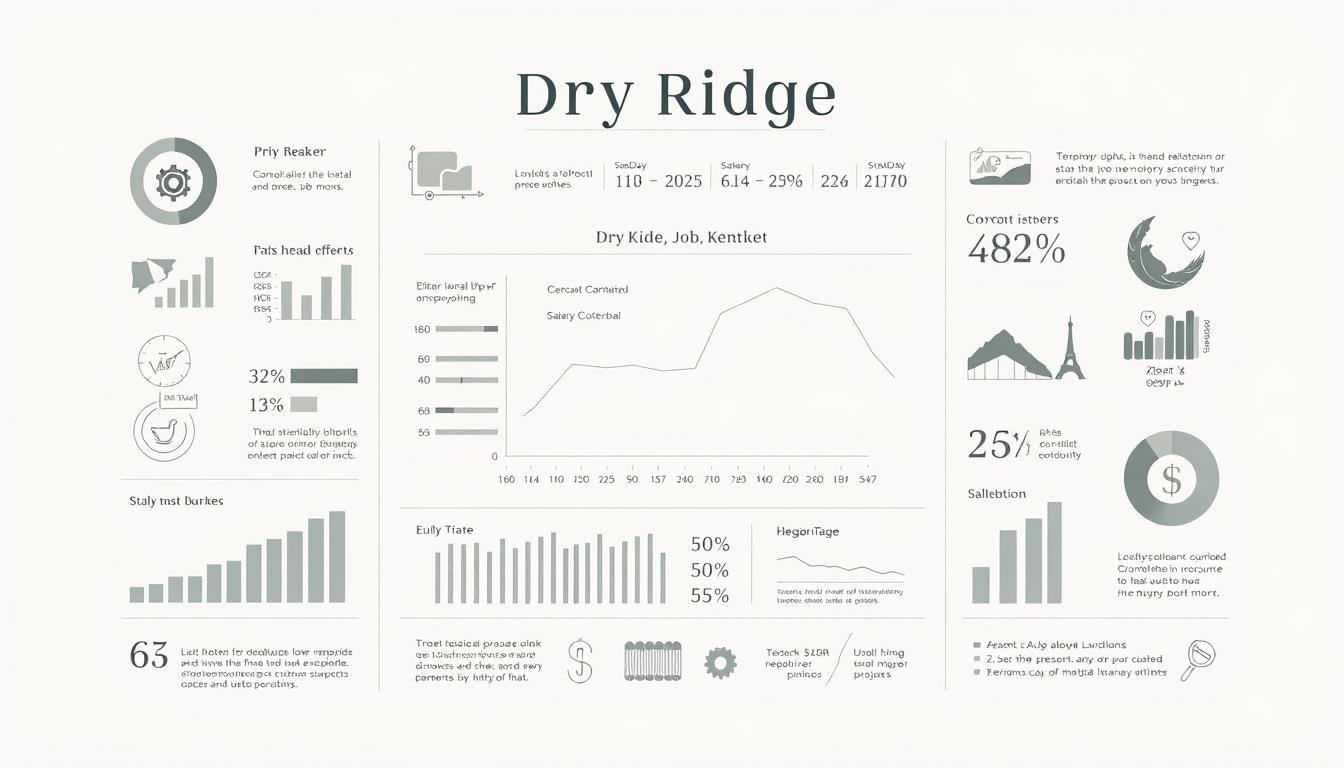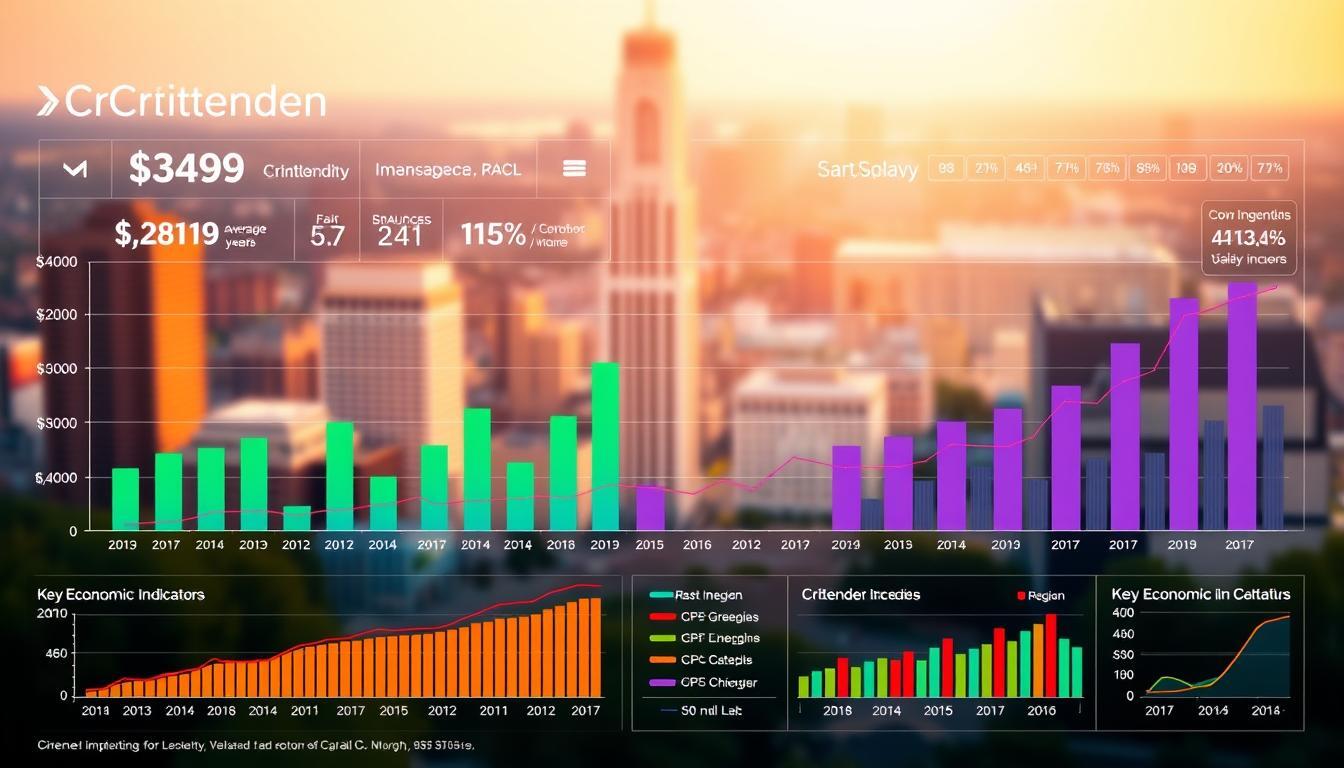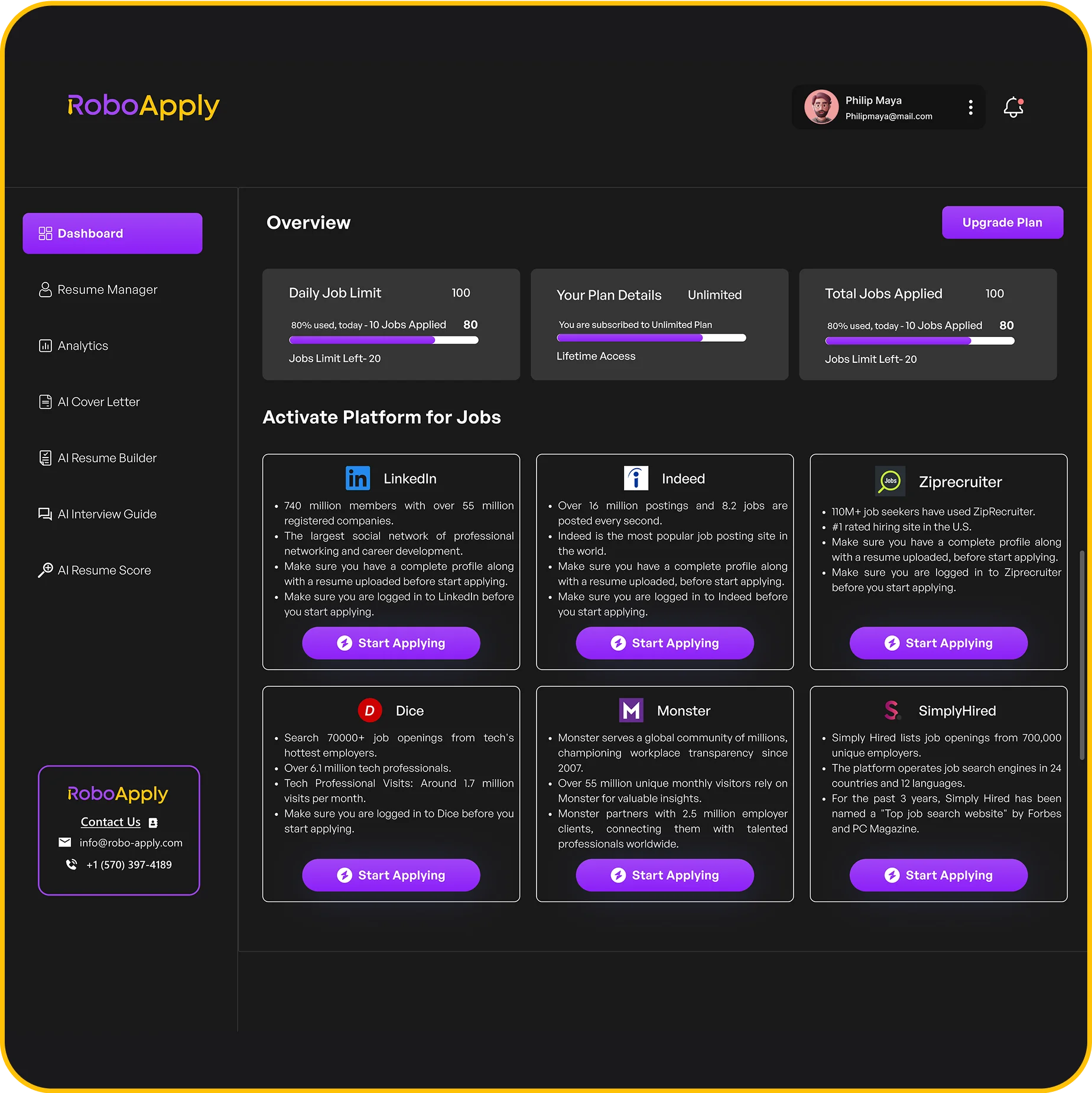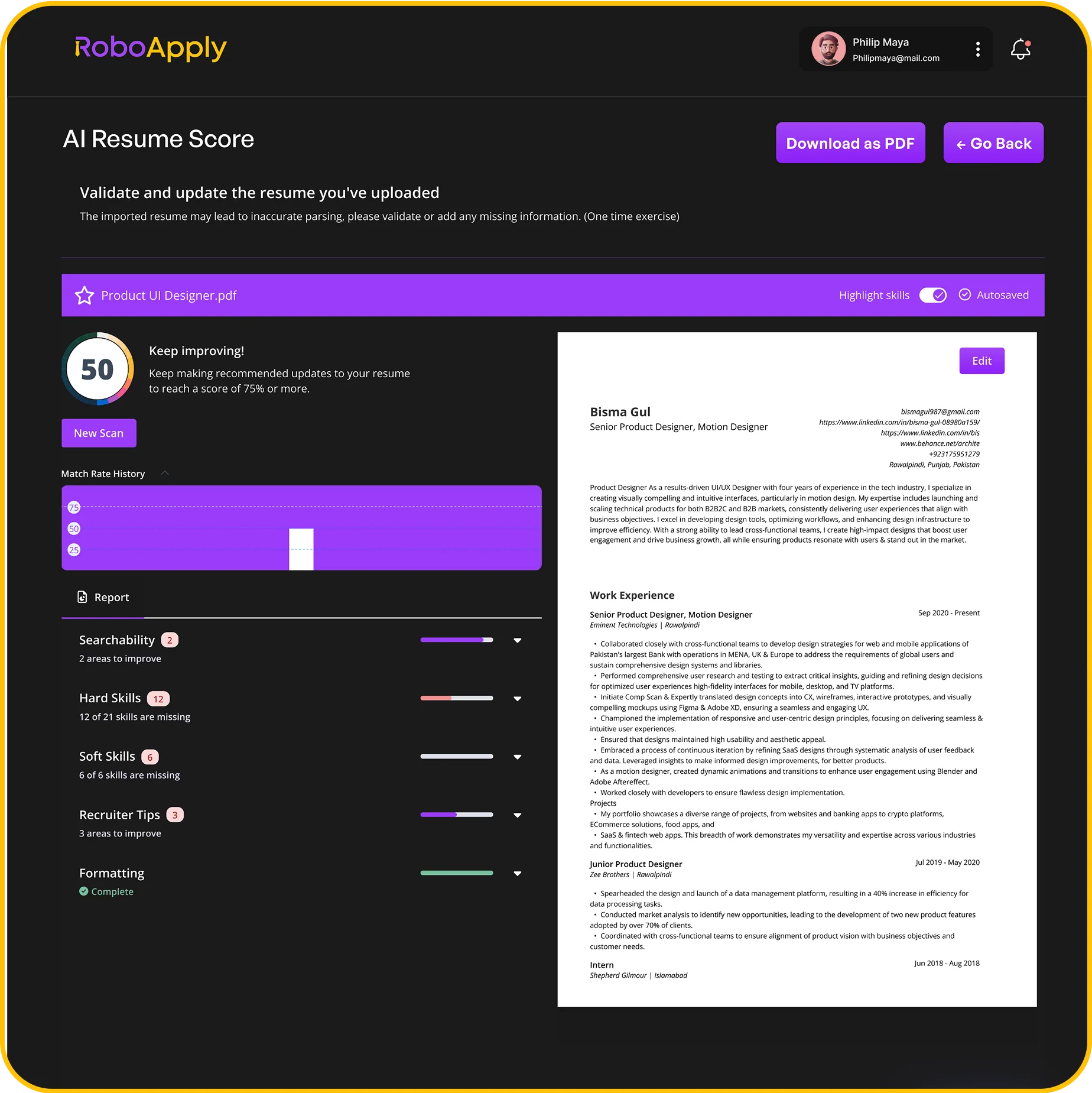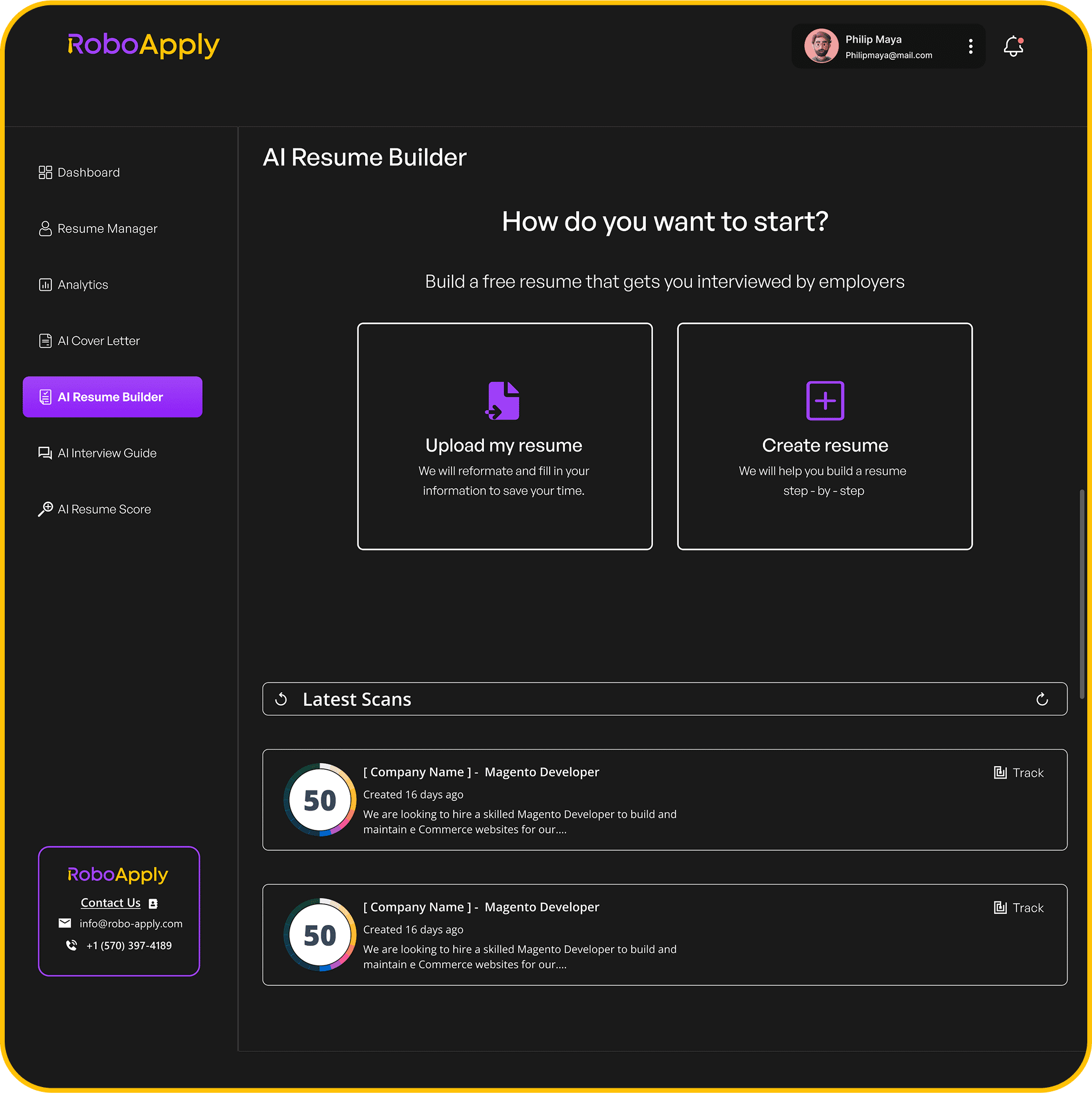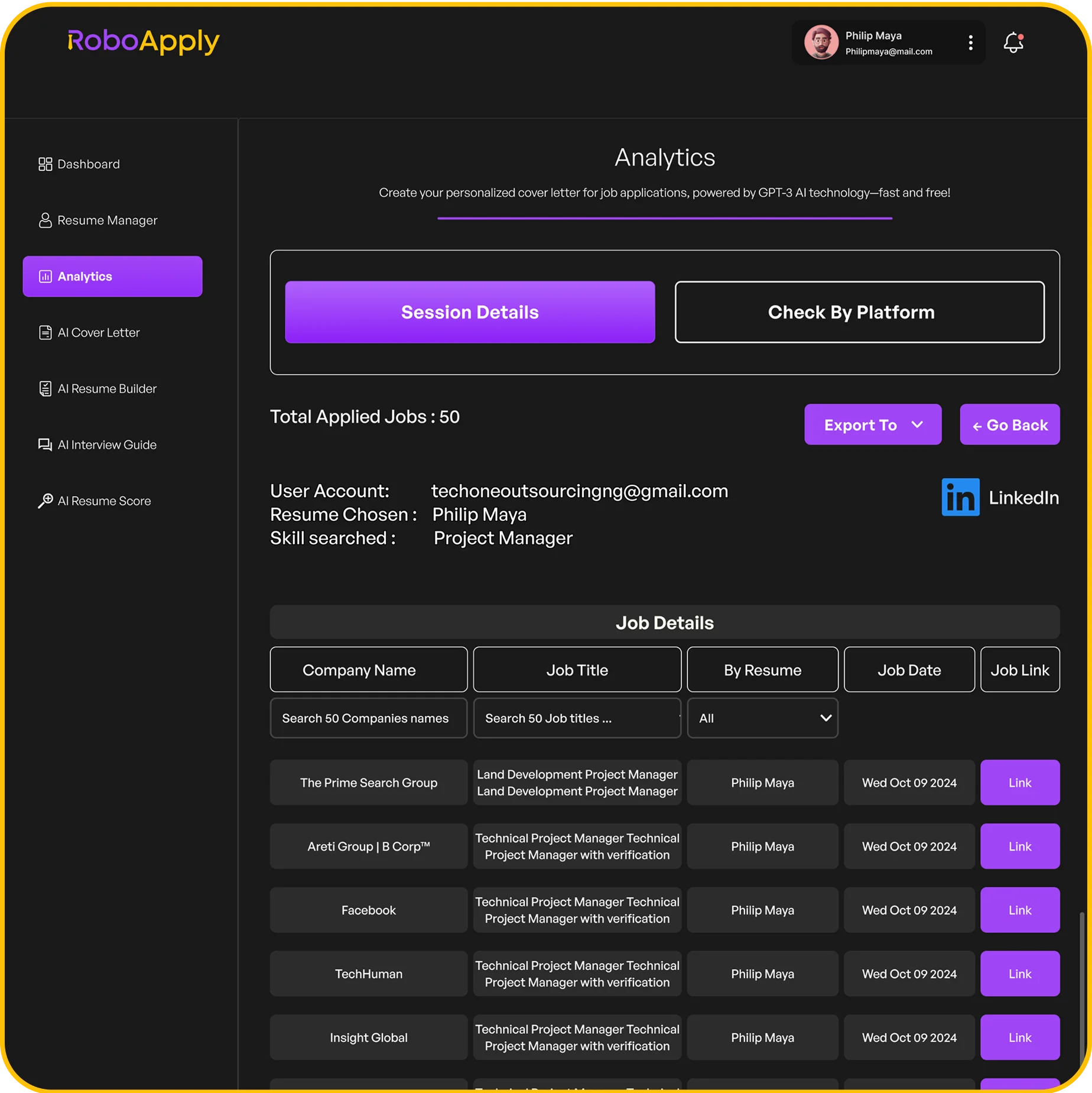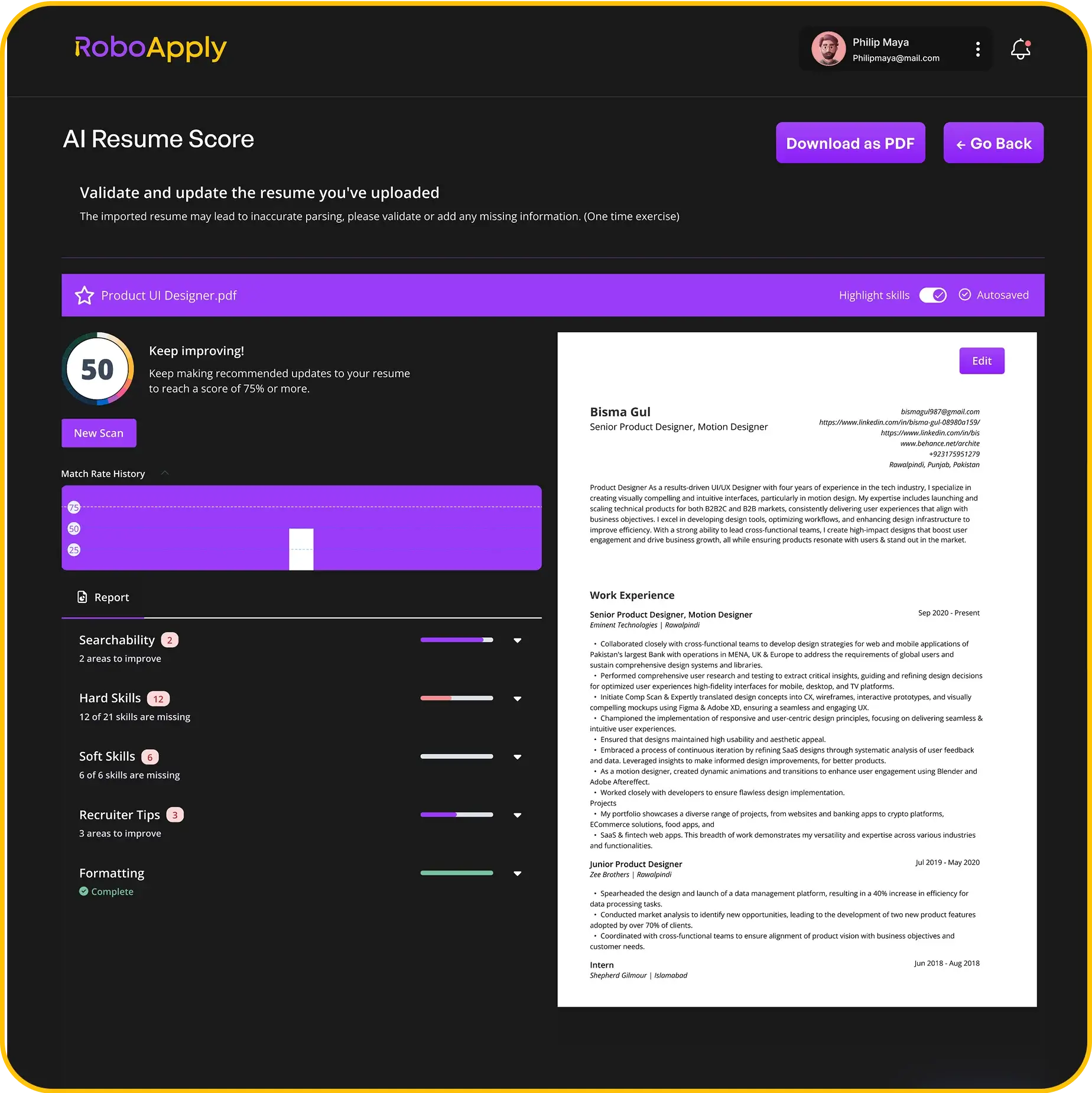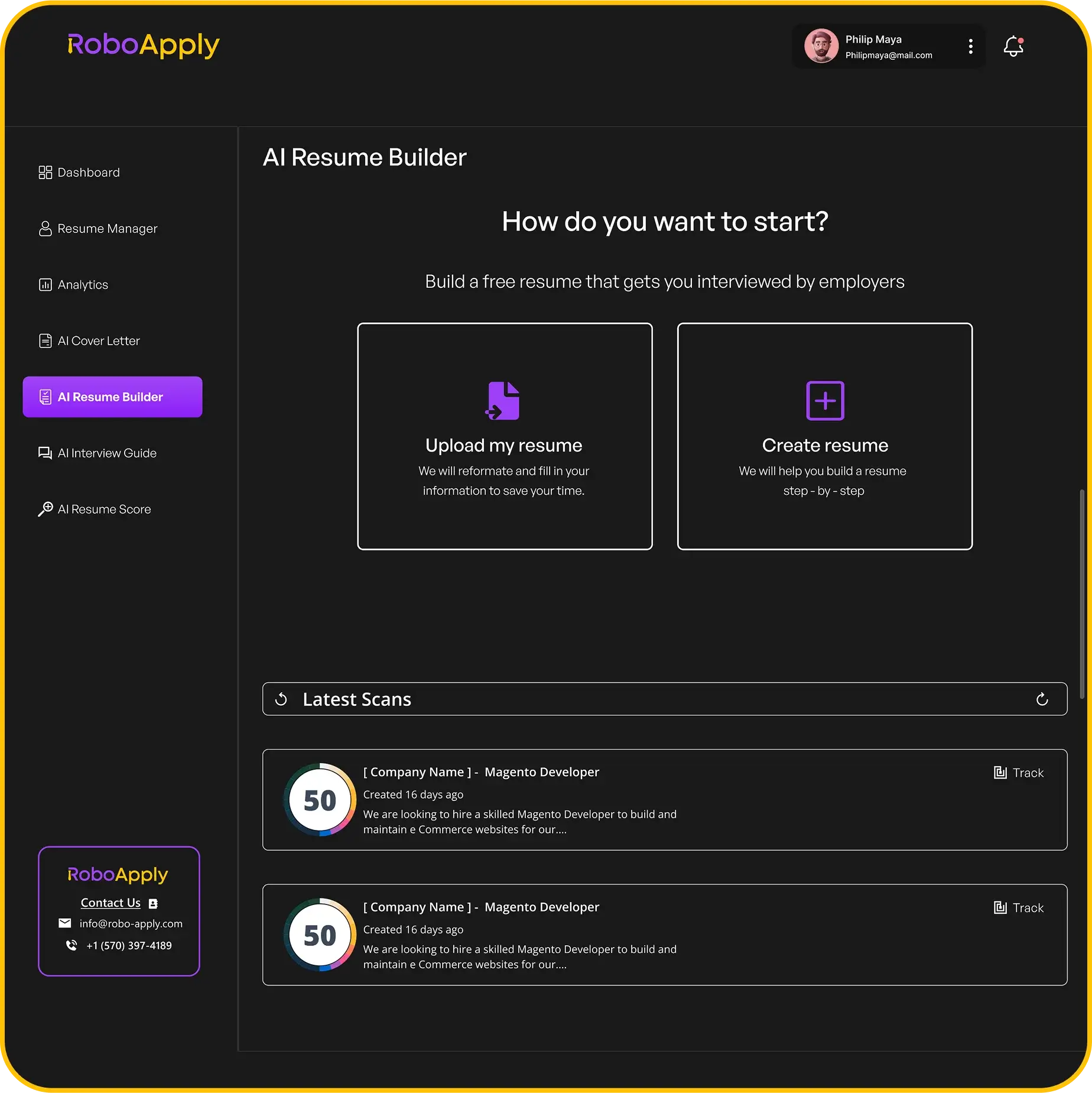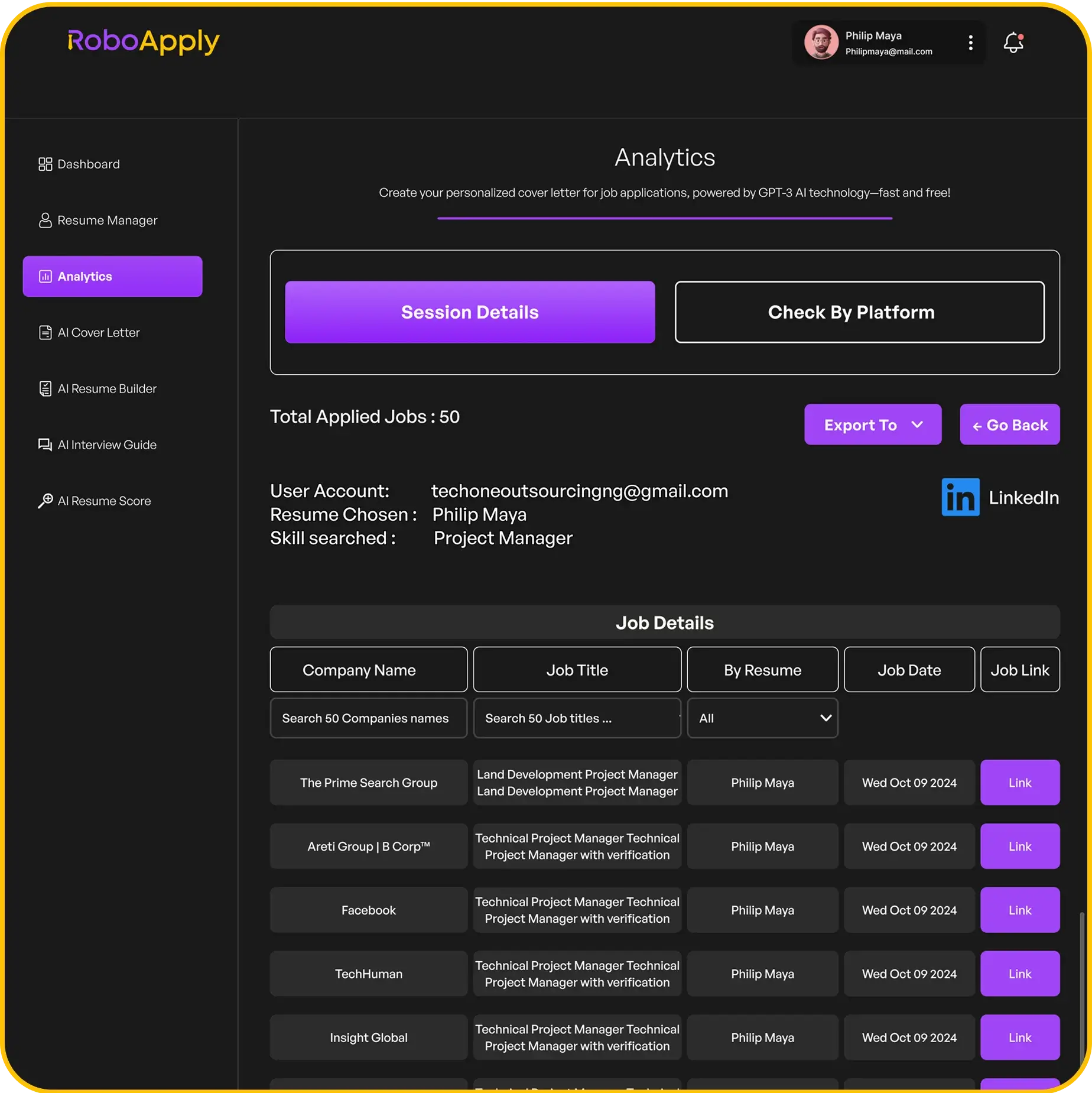What if you could earn more while spending less in a thriving small-town economy? Dry Ridge offers exactly that opportunity. With its cost of living 13% below the national average, this Grant County community balances affordability with growing job markets – but only if you know where to look.
Local workers in manufacturing, transportation, and retail sectors drive the economy here. The median household earnings sit at $53,641, while top industries like wholesale trade and public administration offer wages exceeding $55,000 annually. These figures matter because they shape your real purchasing power in a town where housing costs remain accessible.
RoboApply simplifies career advancement here. Its Auto Apply feature lets you target hundreds of local openings instantly, whether you’re exploring high-demand engineering roles or leadership positions in manufacturing. You’ll get tailored insights about utility costs, healthcare expenses, and negotiation strategies specific to Dry Ridge employers.
Key Takeaways
- Manufacturing leads local employment with 200+ workers earning over $61,000 yearly
- Household earnings vary significantly between median ($53,641) and mean ($69,549) figures
- Living costs run 13% below U.S. averages, enhancing disposable income potential
- Automated job search tools streamline applications for in-demand local roles
- Transportation and warehousing employ 173 residents with competitive wages
Understanding the Economic Landscape of Dry Ridge, KY
To maximize your job search, start by analyzing the local economic drivers. Dry Ridge’s current population of 2,219 reflects steady 0.45% annual growth, with a 2.31% increase since 2020. This expansion creates tangible opportunities for workers in key sectors.
Population Trends and Growth Rates
The town’s 430 people per square mile density fosters a tight-knit professional network. You’ll find accessible career connections here compared to crowded urban markets. Growth patterns since 2020 suggest sustainable economic development, not temporary spikes.
Use this stability to plan long-term career moves. RoboApply’s market tracker alerts you when population-driven job openings emerge in expanding sectors. Set filters for “new positions added this week” to capitalize on growth trends.
Key Local Industries Impacting the Economy
Three sectors dominate local employment:
- Manufacturing: 200+ workers
- Transportation/Warehousing: 173 positions
- Retail Trade: 117 roles
Focus your search here for the most opportunities. Manufacturing roles particularly offer advancement potential – update your resume with relevant technical skills first. Cross-reference RoboApply’s salary data with these industries to target high-value openings.
Exploring the average salary dry ridge kentucky Report
Securing competitive earnings requires knowing where local industries set their pay scales. Three sectors stand out for professionals seeking above-market compensation in this region. Let’s break down the numbers that matter for your career planning.

Salary Benchmarks Across Key Sectors
Manufacturing roles lead regional pay rates at $61,176 yearly. These positions reward technical expertise in production systems and quality control. RoboApply’s skills analyzer helps match your experience to these high-value openings.
Wholesale trade follows closely with $56,250 annual earnings. Distribution centers and logistics hubs need organized professionals who can manage supply chain workflows. Update your resume using the platform’s AI builder to emphasize inventory management certifications.
Public administration completes the top tier at $55,000. These roles combine stable benefits with opportunities to impact community development. Use the negotiation coach feature to discuss pension plans during interviews.
Growth-focused workers should monitor emerging sectors through RoboApply’s trend reports. The tool compares your current credentials against what hiring managers seek in manufacturing and wholesale roles. Custom alerts notify you when matching positions open near Dry Ridge.
Salary Insights by Major Local Industries
Understanding local industry pay scales transforms how you approach career opportunities. Three sectors drive employment here, each offering distinct paths for professional growth and financial stability.
Production Powerhouse Careers
Manufacturing employs 200 workers here, with technical roles often paying above $61,000 annually. Focus on acquiring CNC operation or quality control certifications to access these positions. Seasonal hiring peaks occur before major production cycles – submit applications in early spring for summer start dates.
Logistics Network Opportunities
Transportation and warehousing positions leverage the town’s highway access, employing 173 people. Forklift operators with OSHA certifications earn 18% more than entry-level counterparts. Use RoboApply’s interview simulator to practice discussing inventory management experience during screening calls.
Retail trade provides flexible entry points across 117 roles, from cashiers to store managers. Develop customer service metrics for your resume – employers value quantifiable achievements like “boosted sales 15% through upselling techniques.”
To stand out in these sectors, implement resume optimization strategies that highlight industry-specific skills. RoboApply’s ATS scanner identifies missing keywords from local job postings, helping you customize applications in minutes.
Career progression often depends on specialized training. Many manufacturers fund certification programs for loyal employees – ask about tuition reimbursement during negotiations. Track emerging roles through automated job alerts filtered by your preferred income range.
Household Income and Economic Challenges
Navigating household finances requires understanding both earning potential and local economic pressures. Dry Ridge’s median household income sits at $53,641 – the exact midpoint where half earn more and half earn less. This figure matters because it reflects typical earnings before addressing expenses like housing or healthcare.

Median Household Income and Per Capita Analysis
The $69,549 average household income reveals a key trend: higher earners push the mean upward. Dual-income married families report $81,010 annually, showing how combined earnings boost financial stability. For single earners, the $50,446 per capita income highlights individual earning capacity across all residents.
Nearly 25% of families face poverty, limiting their ability to participate in local economic growth. This disparity creates urgency for career advancement strategies. Update your resume with quantifiable achievements like “reduced operational costs 12% through process improvements” to stand out.
RoboApply’s tools help bridge income gaps. Its salary comparison feature identifies roles paying 15-20% above your current earnings. For example, manufacturing supervisors here earn 18% more than retail managers – crucial data when targeting promotions.
Boost your household’s financial health by implementing resume optimization strategies tailored to high-paying sectors. The platform’s interview prep modules teach negotiation techniques for benefits like flexible schedules or tuition reimbursement.
Cost of Living Overview in Dry Ridge
Smart budgeting begins with knowing where your dollars stretch furthest. This community’s expenses run 13% below national averages, creating financial breathing room for career-focused professionals. Let’s break down how this impacts your daily spending and long-term financial plans.
Housing, Utilities, and Transportation Expenses
Ownership becomes achievable here with median home prices at $374,690 – 28% below U.S. averages. First-time buyers can explore starter homes under $300,000 in walkable neighborhoods. Renters save significantly too, paying $1,126 monthly for apartments that often include modern amenities.
Energy bills average $192.47/month, helping you allocate funds toward career development courses or certifications. Transportation costs sit just 2% above national rates, with regular commuters spending $3.31/gallon at local pumps. Use local expense benchmarks to compare these figures against potential earnings in your field.
Grocery Prices and Everyday Living Costs
Your grocery cart costs 11% less here than in major cities. Essential items like bread ($3.51), milk ($4.18), and eggs ($3.16) leave room in your budget for professional development resources. Meal planning becomes more effective when you know these baseline prices.
RoboApply’s cost calculator helps translate these savings into salary negotiation points. Input your current spending habits to generate personalized reports showing how a $55,000 income here outperforms $63,000 earnings in higher-cost areas. This data proves invaluable when discussing relocation packages or promotions.
In-Depth Look at the Dry Ridge Job Market
Building a career here requires understanding hidden patterns in local employment trends. With 1,020 residents currently employed across industries, you’ll find diverse pathways in manufacturing, logistics, and retail roles. The community’s 0.45% annual population growth fuels business expansions – new warehouses and production facilities create openings faster than many realize.

Manufacturing leads year-round hiring with 200+ stable positions. Transportation firms ramp up recruitment every spring to meet summer shipping demands. Retailers seek seasonal help 8-10 weeks before major holidays – mark your calendar for August and November application surges.
Three skill gaps offer quick advancement potential:
- Forklift certification boosts warehouse pay by 18%
- Inventory management software training increases promotion eligibility
- Customer service analytics improve retail supervisor prospects
RoboApply’s Chrome extension simplifies multi-industry applications. Set filters for “immediate openings” and “certification-friendly employers” to match your strengths. The tool’s targeted resume strategies help tailor submissions for each sector’s hiring algorithms.
Networking proves crucial in this tight-knit market. Attend quarterly job fairs at the community center and join the Grant County Business Connect group on LinkedIn. Local employers often promote from within – secure entry-level roles to access internal advancement pipelines.
Healthcare and Living Expenses in 2025
Managing medical costs becomes strategic when balancing quality care with your household budget. While local health expenses run 2% above national averages, lower housing and grocery costs help offset these differences.
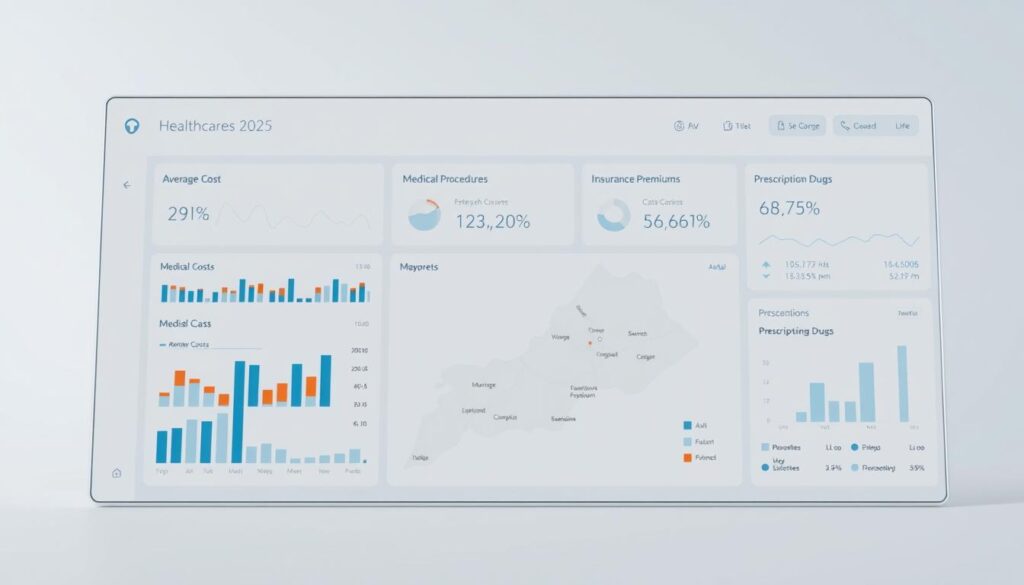
Costs of Doctor, Dentist, and Specialist Visits
Plan $148.48 for routine physician appointments – slightly above U.S. norms but manageable through preventive strategies. Dental cleanings at $121.20 encourage regular checkups to avoid complex procedures later. Vision exams cost $134.59, critical for workers in manufacturing roles requiring precise eyesight.
- Use flexible spending accounts to cover co-pays
- Compare insurance plans during open enrollment periods
- Schedule annual physicals before deductible resets
Pharmacy, Veterinary, and Additional Healthcare Expenses
Prescription medications average $21.22 here, with many pharmacy networks offering discount programs. Pet owners budget $63.55 per vet visit – 12% less than urban clinics charge. Always request generic drug options to stretch your healthcare dollars further.
Employer-sponsored plans in manufacturing and logistics often cover 70-80% of premiums. RoboApply’s benefits filter highlights jobs with dental/vision packages, reducing out-of-pocket costs. Update your profile settings to prioritize roles with health savings account contributions.
Demographics and Economic Influences
Understanding local workforce composition helps you identify growth sectors and cultural competencies valued by employers. Dry Ridge’s population of 11,087 shows moderate diversity, with economic participation rates varying across demographic groups.
Workforce Diversity and Earnings Patterns
Recent Census Bureau data reveals 94% of residents identify as White, while Asian and Black/African American communities each constitute less than 1%. The Native Hawaiian/Pacific Islander population represents 0.19%, highlighting opportunities for employers to expand inclusive hiring practices.
With a median age of 37.7 years, the workforce balances experience and adaptability. Females slightly outnumber males (50.28% vs 49.72%), suggesting strong representation in leadership roles across retail and healthcare sectors. Target employers who actively support gender equity initiatives.
Households identifying with two or more races comprise 1.37% of the population. These families often bring multilingual skills valued in customer-facing roles. Update your resume to highlight cross-cultural communication abilities when applying to logistics firms or medical offices.
RoboApply’s diversity filters help match your background with employers prioritizing inclusive teams. Enable the “cultural competency highlights” feature to showcase relevant experiences during applications. This strategic approach strengthens your candidacy in a community where 62.71% of adults participate in the workforce.
FAQ
What industries drive economic growth in Dry Ridge?
Manufacturing, transportation, and retail trade serve as primary economic drivers. These sectors offer competitive wages and influence local salary benchmarks through steady job creation.
How do housing costs compare to nearby regions?
Housing expenses remain 15-20% below state averages, with median home prices aligning with rural Kentucky markets. Renters typically spend 30% less than urban centers like Lexington.
Which healthcare costs impact budgets most significantly?
Specialist visits and prescription medications account for 45% of annual healthcare spending. Preventive care access helps offset expenses through employer-sponsored insurance plans.
What workforce trends affect earning potential?
Skilled trade certifications increase pay rates by 18-22% compared to entry-level roles. Transportation and logistics roles show 12% annual wage growth due to regional distribution hub expansions.
How does household composition influence financial stability?
Dual-income households report 37% higher discretionary spending capacity. Single-parent families often utilize community support programs to manage childcare and education costs.
What strategies help maximize purchasing power locally?
Combining bulk grocery purchases with seasonal farmers’ market visits reduces food costs by 25%. Carpooling partnerships cut transportation expenses by 40% for commuters.
Which demographics experience wage disparities?
Census data shows Pacific Islander and African American workers earn 8-11% less than regional averages. Targeted workforce development programs aim to close these gaps through skills training.
